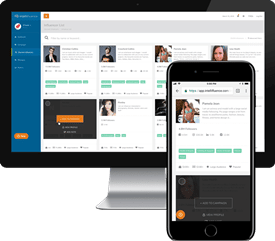Last Updated on July 2, 2020
Social media isn’t just a numbers game. Along with reaching thousands of people, you also need to get those people to engage with you — and engage in a way that is positive and drives website traffic and sales. This isn’t always easy. Often, brands have high levels of engagement, but not for the reasons they expect.
If you’re seeing high engagement levels within your influencer marketing or other social media marketing campaigns but they aren’t turning into sales, it may be time to review your social sentiment. This guide will tell you everything you need to know about conducting a sentiment analysis in social media.
What Is Social Sentiment?
Simply put, social sentiment evaluates the emotion behind the comments and messages about a particular topic online. If you promote a particular product, but customers aren’t happy about it or don’t like the brand, then they will likely let you know.
A great example of a restaurant needing social media sentiment analysis is IHOP. Last year, the pancake company announced that it would be changing its name to IHOB as a way to promote its burgers. This news generated millions of comments and other forms of engagement. However, pretty much everyone was ridiculing the restaurant. IHOP eventually changed its name back and tried to pass off the marketing campaign as a “viral stunt” and a joke to get people talking.
Despite the haters, the campaign was effective. IHOP earned more than 20,000 stories about the name change, resulting in 36 billion earned media impressions. The company had the potential reach of 4 billion people. More importantly, their burger sales quadrupled.
Does it Always Need to Be Positive?
It goes without saying that companies almost always want their customers to talk about the brand in a positive way. In the vast majority of cases, you will conduct a sentiment analysis social media with the goal of making sure the majority of people like your products. However, the sentiment doesn’t always have to be positive. If you want to elicit a sad or angry emotion from your audience, you can track its success based on how people react.
For example, various organizations try to elicit strong reactions through political or controversial topics. The goal is to rile up their audience and make them angry because then they will take action. In this case, the brand would want a negative social media sentiment analysis to prove that their efforts elicited strong emotions.
How Can You Measure Social Sentiment?
You can run a social media sentiment analysis for your brand in several different ways. Smaller companies on a budget will review their social media posts manually to see how people react. They will also check their mentions to see if there are any negative comments or criticisms that they should be aware of. Oftentimes, these companies aren’t expecting a large negative backlash from what they post.
It is important to note that social media sentiment measurement doesn’t just rely on tracking what you post. It also applies to anything said about your brand on the web. If you are waiting for audiences to tag your brand name or use a specific hashtag to see what they are saying, then you are ignoring a large part of the internet that is likely talking about your brand.
Additionally, various social sentiment tools can help you gather quantitative data on what your customers think about your brand. Hootsuite offers monitoring tools like this, but there are many others as well. You can also find paid tools that enable you to keep an eye on changes in social media sentiment so you can take action quickly if something goes awry.
How Can You Increase the Chances of a Successful Social Media Campaign?
If you are worried about your social media campaign backfiring with audiences criticizing your products or your brand, consider taking these steps to increase the chances of a positive reception:
- Choose influencers in your niche with audiences who will already be open to the products or services that you want to promote.
- Start small with a few influencers in a small campaign to see how people respond to your brand messaging.
- Have multiple people review all social media posts and graphics before you post them to increase the chances that someone will spot anything controversial and correct it.
- Conduct a social sentiment analysis immediately so you can act quickly if your ad starts to backfire.
Many brand managers would prefer to have a small campaign that flops and gives their team time to develop a new one over a campaign that goes viral for all of the wrong reasons.
Tracking social media sentiment is just as important as measuring your overall reach or website sales. It can help you know what your customers think and how they respond to different messages. This information gives you more control over your marketing efforts for an increased chance of success in the future.

SallyBot is committed to helping users get the most out of Intellifluence. By helping brands create campaigns, providing unparalleled customer service and offering useful advice, nothing makes SallyBot happier than hearing she is liked… Really, really liked.






